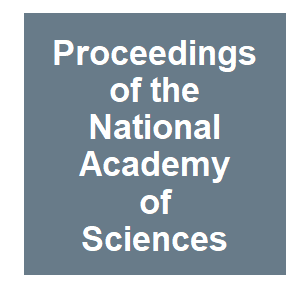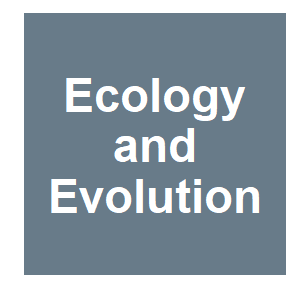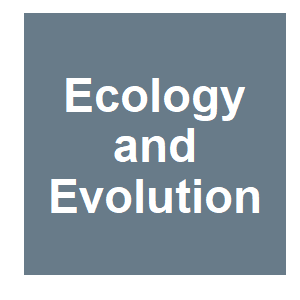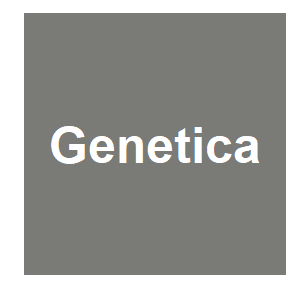
Keywords: medea

|
Split versions of Cleave and Rescue selfish genetic elements for measured self limiting gene driveG. Oberhofer, T. Ivy and B. A. Hay, PLoS genetics, 17:e1009385. 2021.
Self-sustaining Cleave and Rescue (ClvR) elements include a DNA sequence-modifying enzyme such as Cas9/gRNAs that disrupts endogenous versions of an essential gene, a tightly linked recoded version of the essential gene resistant to cleavage (the Rescue), and a Cargo. ClvR ... Keywords: gene drive evolution, gene drive genetics, gene drive natural, maternal effect, medea, red flour beetle, selfish genetic element |

|
Selfing is the safest sex for Caenorhabditis tropicalisL. M. Noble, J. Yuen, L. Stevens, N. D. Moya, R. Persaud, M. Moscatelli, J. L. Jackson, G. Zhang, R. Chitrakar, L. R. Baugh, C. Braendle, E. C. Andersen, H. S. Seidel and M. V. Rockman, eLife, 10:e62587. 2021.
We generated a chromosomal-scale genome for C. tropicalis and surveyed global diversity. Population structure is very strong, and islands of extreme divergence punctuate a genomic background that is highly homogeneous around the globe. Outbreeding depression in the laboratory is ... Keywords: gene drive evolution, gene drive genetics, gene drive natural, maternal effect, medea, red flour beetle, selfish genetic element |

|
Ubiquitous Selfish Toxin-Antidote Elements in Caenorhabditis SpeciesE. Ben-David, P. Pliota, S. A. Widen, A. Koreshova, T. Lemus-Vergara, P. Verpukhovskiy, S. Mandali, C. Braendle, A. Burga and L. Kruglyak, Current Biology, 2021.
Here, we report the discovery of maternal-effect TAs in both C. tropicalis and C. briggsae, two distant relatives of C. elegans. In C. tropicalis, multiple TAs combine to cause a striking degree of intraspecific incompatibility: five elements reduce the fitness of >70% of the ... Keywords: gene drive evolution, gene drive genetics, gene drive natural, maternal effect, medea, red flour beetle, selfish genetic element |

|
Survival of the fit-ishStowers Institute for Medical Research, Science Daily, 2020.
In a paper published online August 13, 2020, in eLife, members of the Zanders lab explain how it could be possible that meiotic drivers persist in the population, even as they kill off many would-be hosts. It turns out that S. pombe can employ variants of other genes to help ... Keywords: gene drive evolution, gene drive genetics, gene drive natural, maternal effect, medea, red flour beetle, selfish genetic element |

|
Ubiquitous selfish toxin-antidote elements in Caenorhabditis speciesE. Ben-David, P. Pliota, S. A. Widen, A. Koreshova, T. Lemus-Vergara, P. Verpukhovskiy, S. Mandali, C. Braendle, A. Burga and L. Kruglyak, bioRxiv, 2020.08.06.240564. 2020.
We discovered five maternal-effect Toxin/Antidotes (TAs) in the nematode Caenorhabditis tropicalis and one in C. briggsae. Unlike previously reported TAs, five of these novel toxins do not kill embryos but instead cause larval arrest or developmental delay. Our results show ... Keywords: gene drive evolution, gene drive genetics, gene drive natural, maternal effect, medea, red flour beetle, selfish genetic element |

|
Selfing is the safest sex for Caenorhabditis tropicalisL. M. Noble, J. Yuen, L. Stevens, N. Moya, R. Persaud, M. Moscatelli, J. Jackson, C. Braendle, E. C. Andersen, H. S. Seidel and M. V. Rockman, bioRxiv, 2020.08.07.242032. 2020.
Frequent selfing in Caenorhabditis. tropicalis may be a strategy to avoid gene drive-mediated outbreeding depression. Mating systems have profound effects on genetic diversity and compatibility. Caenorhabditis tropicalis is the least genetically diverse among 3 species of ... Keywords: gene drive evolution, gene drive genetics, gene drive natural, maternal effect, medea, red flour beetle, selfish genetic element |

|
Maternal effect killing by a supergene controlling ant social organizationA. Avril, J. Purcell, S. Béniguel and M. Chapuisat, Proceedings of the National Academy of Sciences, 2020.
Supergenes are clusters of linked loci producing complex alternative phenotypes. In a series of experiments, we demonstrate that a supergene controlling ant social organization distorts Mendel’s laws to enhance its transmission to adult offspring. One supergene haplotype is ... Keywords: gene drive evolution, gene drive genetics, gene drive natural, maternal effect, medea, red flour beetle, selfish genetic element |

|
Genetic Biocontrol – An OverviewGeneConvene Global Collaborative,, GeneConvene Global Collaborative, 2020.
This video explains what genetic biocontrol is and surveys various technologies that can be consider genetic biocontrol technologies. It offers a conceptual organization of the various technologies based on the potential of genetic biocontrol organisms to persist and spread in ... Keywords: gene drive evolution, gene drive genetics, gene drive natural, maternal effect, medea, red flour beetle, selfish genetic element |

|
The impact of local population genetic background on the spread of the selfish element Medea-1 in red flour beetlesS. A. Cash, M. A. Robert, M. D. Lorenzen and F. Gould, Ecology and Evolution, 12:1-12. 2019.
Selfish genetic elements have been found in the genomes of many species, yet our understanding of their evolutionary dynamics is only partially understood. A number of distinct selfish Medea elements are naturally present in many populations of the red flour beetle (Tribolium ... Keywords: gene drive evolution, gene drive genetics, gene drive natural, maternal effect, medea, red flour beetle, selfish genetic element |

|
The distribution and spread of naturally occurring Medea selfish genetic elements in the United StatesS. A. Cash, M. D. Lorenzen and F. Gould, Ecology and Evolution, 9:14407–14416.. 2019.
Selfish genetic elements (SGEs) are DNA sequences that are transmitted to viable offspring in greater than Mendelian frequencies. Medea SGEs occur naturally in some populations of red flour beetle (Tribolium castaneum) and are expected to increase in frequency within populations ... Keywords: gene drive evolution, gene drive genetics, gene drive natural, maternal effect, medea, red flour beetle, selfish genetic element |

|
Threshold-Dependent Gene Drives in the Wild: Spread, Controllability, and Ecological UncertaintyG. A. Backus and J. A. Delborne, BioScience, 69:900-907. 2019.
Gene drive technology could allow the intentional spread of a desired gene throughout an entire wild population in relatively few generations. However, there are major concerns that gene drives could either fail to spread or spread without restraint beyond the targeted ... Keywords: gene drive evolution, gene drive genetics, gene drive natural, maternal effect, medea, red flour beetle, selfish genetic element |

|
A selfish gene chastened: Tribolium castaneum Medea M (4) is silenced by a complementary geneThomson, MS, Genetica, 142:161-167. 2014.
Maternal-effect dominant embryonic arrest (Medea) of Tribolium castaneum are autosomal factors that act maternally to cause the death of any progeny that do not inherit them. This selfish behavior is thought to result from a maternally expressed poison and zygotically expressed ... Keywords: gene drive evolution, gene drive genetics, gene drive natural, maternal effect, medea, red flour beetle, selfish genetic element |

Contact
David O’Brochta
Foundation for the
National Institutes of Health
geneconvenevi@fnih.org
RSS

